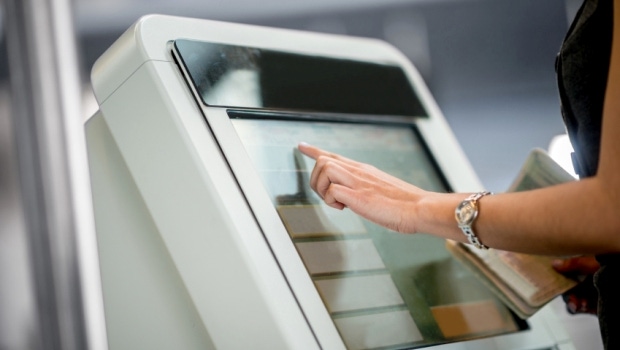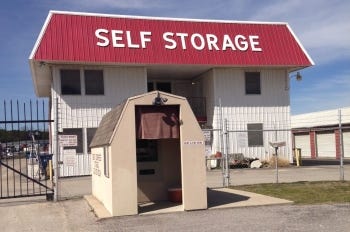Technology can help self-storage managers be exponentially more efficient. Here’s a look at how one operator improved customer service and revenue after adopting several automation tools.
April 11, 2015

By Robert Chiti and Mark Yandow
Self-service technology is advancing rapidly, and there’s nothing we can do to stop customers from craving it. Today nearly every product is being made available for purchase without the need for human assistance. The Internet—via mobile device, laptop and desktop—has become the world’s largest self-service system. Self-serve provides an effortless experience and is extremely suitable in a world that wants convenience.
Self-storage, like many other industries, has benefitted from this trend. Facility developer and owner Mark Yandow grimaces when remembering a time before automated business processes. “When I dig deep, I recall the pain of trying to drive revenue levels higher. I remember the late nights, weekends and manual tasks that were required to run the best storage facility on the block,” he says. Yandow is the owner of real estate and property-management firm Yandow Realty Group as well as two storage facilities: South Congress Storage in Austin, Texas, and You Stuff It Storage in Tehachapi, Calif.
Right now there’s technology available to help managers exponentially increase their efficiency, and at less cost than employing a part-time manager. Yandow knows this because he and his business partners have used it. So why is it, when we have the tools to increase property performance, a majority of facility managers are still afraid of what this means for their job security? Shouldn't they embrace technology with open arms?
Despite having personal goals to increase performance, some managers see technology as a threat rather than an opportunity. What Yandow found is most of them seem unimpressed at first, and truly believe there’s only one way to “do storage”—even when purchasing trends show that consumers want to access the product in different ways. New customers and existing tenants love automation, but not all managers see the advantages.
Some managers claim they’ve shied away from automation tools because they have a need to profile customers before renting, or have concerns about security and don’t want new people on the property after hours. As with anything else, there are pros and cons to using technology. But when it comes to renting storage units, the advantages outweigh the potential negatives.
A Lesson to the Storage Business
Ten years ago the demand for storage was more than the supply. It was easier to run a storage business, and customers needed the space. “Even a poorly managed facility could be successful. Then developers overbuilt, and the market shifted to a surplus,” Yandow says.
Now there are markets where supply is greater than demand. A facility must out-service the competition to realize its full potential, Yandow says. “It doesn’t matter how much business a property has today, the minute you stop embracing change is when your competitors will surpass you.”
Does this mean storage operators must adapt or die? Let’s look at a situation where a company failed to evolve and was left by the wayside. Seven short years ago, Blockbuster was the giant in the movie-rental business. It was eventually slayed by Redbox. How? With self-service kiosks.
Blockbuster had plenty of time to adapt as kiosks began popping up slowly in irregular places. Instead, the company brass held tight to the philosophy that the “human experience” at your friendly neighborhood movie store was the only way to do movie rentals. In just three years, there were more than 22,000 kiosks distributing videos. Consumers preferred them because of their convenience. Redbox was able to corner the market by making it easy for people to rent movies quickly and carry on with their day.
This tale holds a smart message for every self-storage professional. A company that once dominated its industry was crushed by an upstart. Redbox identified new customer-purchasing trends and adopted the use of a kiosk to earn a spot at the top of the mountain.
Industry Application
At the same time Redbox began to automate the movie business, Yandow was applying the same plan to automate his self-storage properties. He started by developing the SSBC Scorecard, an analytical practice that assesses a facility’s integrated operation. The grading system allows an operator to measure his start and establish an achievable income potential by defining repeatable business processes.
Yandow has conducted case studies on numerous properties since 2007. The studies demonstrate how automation is instrumental to a property’s bottom-line cash flow and overall value, providing data on performance before and after the use of automation and self-service tools. Yandow’s approach has turned out documented successes in optimized facility performance, with managers producing at higher levels than ever before. As an example, let’s take a look at what happened at South Congress Storage after Yandow purchased it in 2007.
Success at South Congress
South Congress Storage includes 40,000 square feet of storage space in 380 units. At the time of acquisition, the property was 84 percent occupied, similar to its  competitors. Here are some other details about the previous state of operation:
competitors. Here are some other details about the previous state of operation:
The office was open six days a week, 8 a.m. to 5 p.m.
The property-management software was low-cost and outdated.
The facility employed two full-time resident managers who often worked overtime on manual paperwork.
All customer interactions required the presence of a manager. If an employee wasn’t available, no business was conducted.
Calls were missed when managers were busy or the office was closed.
Yandow evaluated the business using the SSBC Scorecard. To incorporate automated tools, he had to invest in business processes, infrastructure and technology. Here’s what changed:
The company redistributed its expenses, eliminating $1,000 in monthly Yellow Pages fees.
It installed a self-service kiosk to allow rentals and payments around the clock.
It activated a call-center rollover service.
It assigned part-time status to one of the resident managers.
It implemented an improvement plan that included manager training and engagement with automation. It also established key performance standards, such as following up on every sales lead generated by the call center within less than 30 minutes.
Following the above changes, South Congress reported the following improvements:
Net operating income increased by more than $6,000 per month after year one. The property is currently yielding more than $12,000 per month.
The property value increased. The facility was appraised at 35 percent higher than the purchase price just eight months after the acquisition.
Occupancy increased from 84 percent to more than 95 percent.
The manager saved more than 20 work hours each month on the rentals and payments made through the onsite kiosk and rollover call service. The time savings was redirected toward meeting key performance measures.
Raising and Exceeding the Bar
“Technology allows us to respond faster to clients. This keeps our customer-service levels and conversion rates at extraordinary levels,” Yandow says. The new system has given him the ability to improve the performance of his entire portfolio.
Turning a typical self-storage operation into a business that outperforms the competition is what property management is all about. Does your manager view automation as being useless, a threat or as something that can make the business more successful? A transformation of this nature takes time, energy, money and flexibility; but in the case of embracing technology, the return can far outweigh the investment.
Robert A. Chiti is president and CEO of Phoenix-based OpenTech Alliance Inc., a provider of several models of INSOMNIAC self-serve kiosks as well as a range of self-storage rental solutions including the INSOMNIAC Live! Call Center, INSOMNIAC Online Web and mobile applications, LiveAgent! software products, and the INSOMNIAC ILock Security System, all available through the company's Self-Storage Cloud. For more information, call 602.749.9370; e-mail [email protected]; visit www.opentechalliance.com.
Mark Yandow is a self-storage owner and real estate broker with more than 35 years of experience specializing in self-storage. He’s also a partner in Self Storage Brokers of California and chief operations officer for Self Storage Management of California. He manages more than 1 million square feet of storage on the West Coast. To reach him, call 805.550.7388; visit www.yandowrealty.com.
You May Also Like





